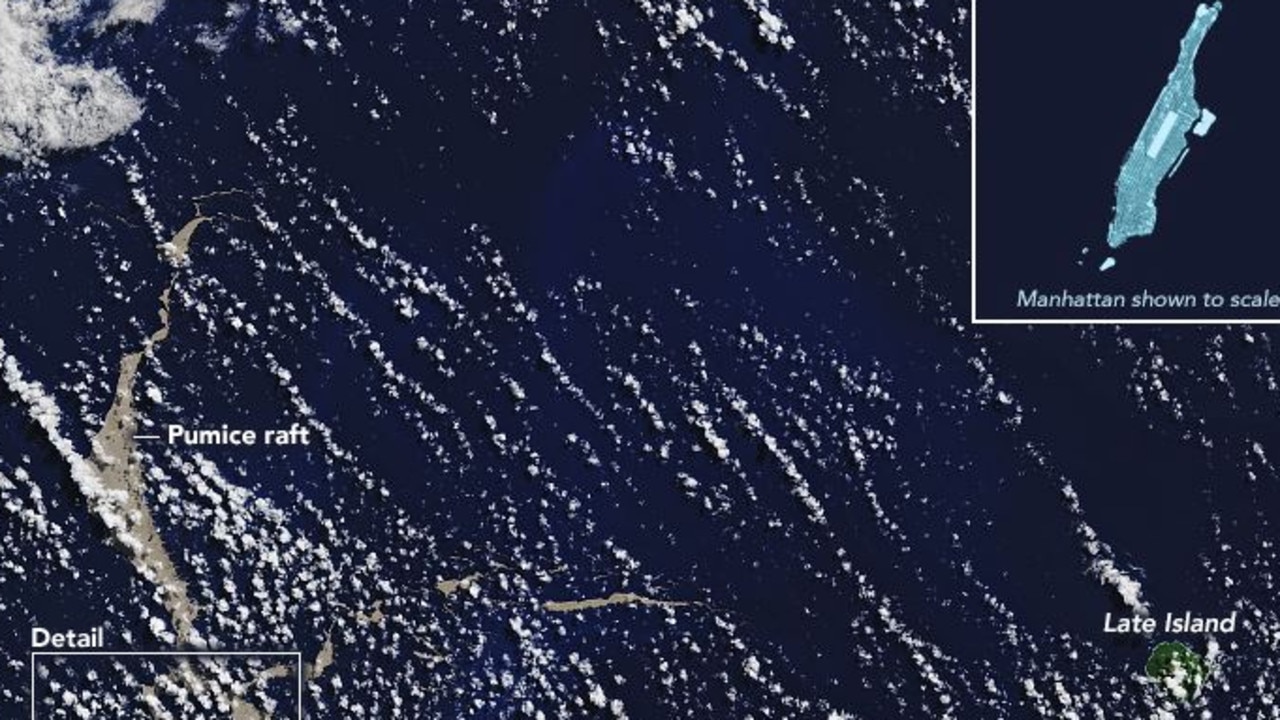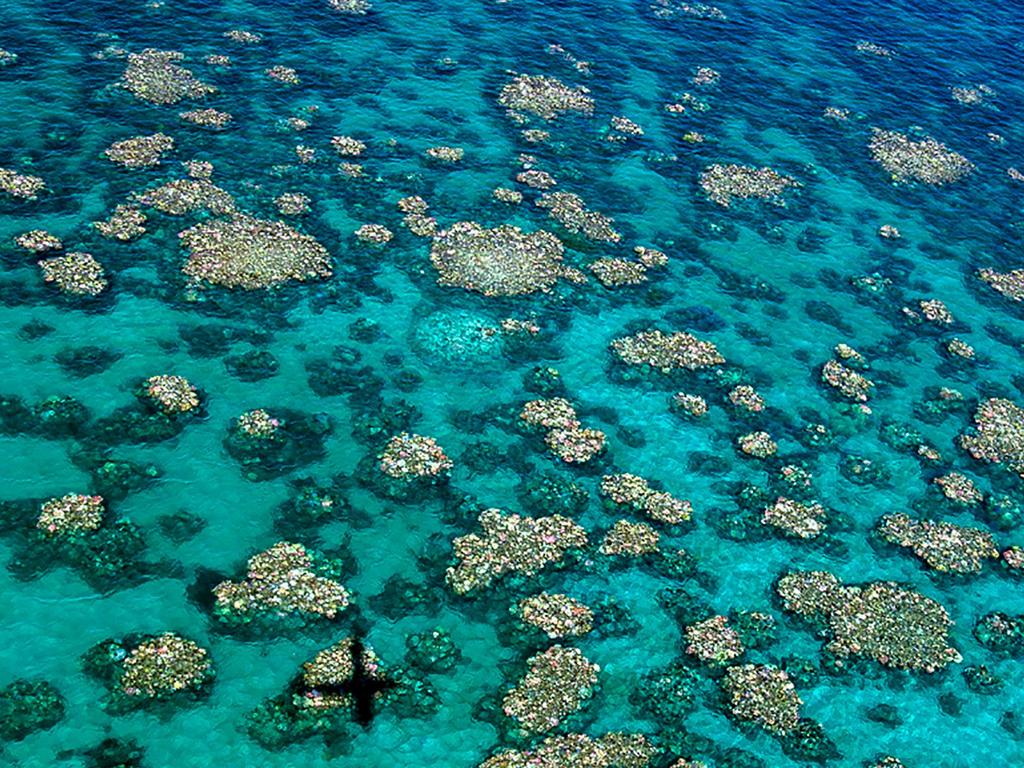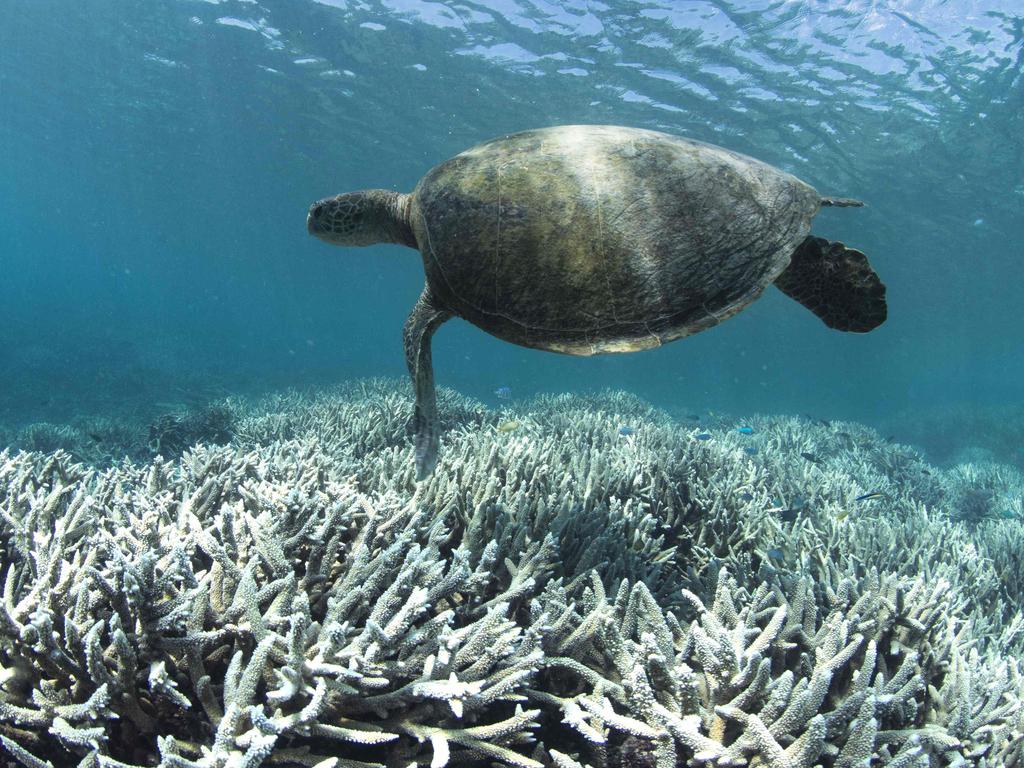Giant pumice ‘raft’ could restore Great Barrier Reef
A giant pumice island is drifting towards Australia after suddenly appearing from the ocean floor. Scientists say it’s great news.
A giant mass of floating pumice the size of Manhattan drifting towards the Great Barrier Reef could help restore it by bringing with it millions of marine organisms.
The raft of floating rock is so expansive it can be tracked by satellite.
The eruption of an undersea volcano near Tonga earlier this month caused the pumice “raft” which was discovered by an Australian couple sailing a catamaran towards Fiji on August 9, CNN reports.
RELATED: Giant pumice island floating in Pacific Ocean
RELATED: Bleaching of the Great Barrier Reef could happen every two years
RELATED: Aussie icon has been cooked

“We entered a total rock rubble slick made up of pumice stones from marble to basketball size,” Michael Hoult and Larissa Brill said in a Facebook Post.
“The waves were knocked back to almost calm and the boat was slowed to 1 knot. The rubble slick went as far as we could see in the moonlight and with our spotlight.
“It was extensive in all other directions.”
The pumice island is expected to drift towards the Australian coast for the next seven to 12 months, bringing with it an abundance of marine life that will attach itself to the volcanic rock.
Pumice rafts can drift for years, helping organisms spread.
Speaking to the ABC , Associate Professor Scott Bryan, a geologist from Queensland’s University of Technology, said along the way marine life will “hitch a ride” to Australia.
“When it gets here, (the pumice raft will be) covered in a whole range of organisms of algae and barnacles and corals and crabs and snails and worms,” he said.
“This is a way for healthy, young corals to be rapidly introduced to the Great Barrier Reef.”

Michael and Larissa had been at sea for 10 days prior to coming into contact with the volcanic rocks.
“It was quite eerie, actually,” Larissa told CNN. “The whole ocean was matt — we couldn’t see the water reflection of the moon.”
Matt added, “The rocks were king of closing in around us, so we couldn’t see our trail or our wake at all. We could just see the edge where it went back to regular water — shiny water — at night.”
“It was a bit of a mystery, we didn’t know how deep it was, if we were sailing over a volcano that was active at that moment,” Larissa said. “It looked almost like where was more coming up, bubbling up from underneath.”
In recent years rising sea temperatures have wrecked the Great Barrier Reef’s ability to grow.
In 2016, two-thirds of the corals in the northern part of the Great Barrier Reef died in the reef’s worst ever bleaching event.
Heat stress from record high summer temperatures damaged the microscopic algae (zooxanthellae) that live in the tissues on corals, turning them white.


After they bleach, these stressed corals either slowly regain their zooxanthellae and colour as temperatures cool off, or else they die.
The endangered coral structure of the Great Barrier Reef could be hit with catastrophic bleaching every two years unless more is done to limit climate change.
Based on current rising a greenhouse gas levels, bleaching will occur every two years by 2034.



